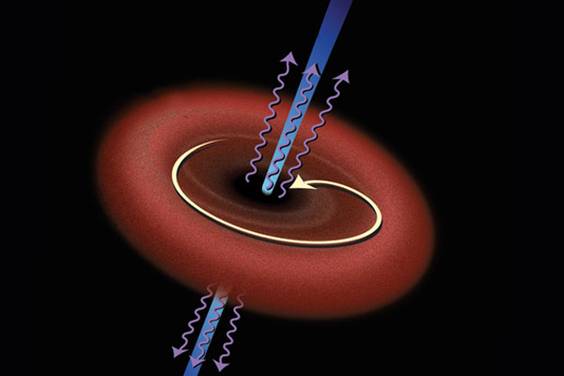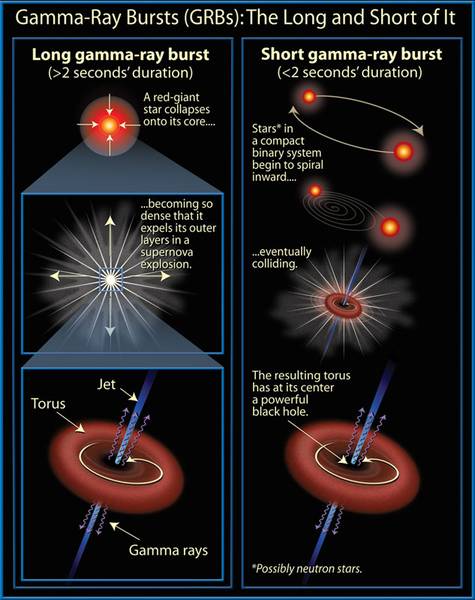19.04.2012
Doubts about gamma ray bursts as the source of cosmic radiation
Our Earth is incessantly bombarded by high-energy particles, so-called cosmic rays. These comprise especially protons, neutrons, electrons and muons, but also other heavy atomic nuclei. Even though they were first discovered exactly 100 years ago, to this day the source of cosmic rays remains one of the greatest mysteries in physics. The IceCube experiment, a huge neutrino detector in Antarctica, has now helped to unravel this mystery a bit further.
On 18 April 2012 the IceCube collaboration that Cluster scientist Professor Elisa Resconi is a member of reported in the trade publication “nature” on a groundbreaking discovery that may disprove one of the leading theories on the source of cosmic rays.
Hitherto, researchers have operated on the assumption that these high-energy particles have two possible sources: massive black holes at the centers of active galaxies and gamma ray bursts (GRBs) resulting from exploding, heavy stars that collapse to black holes.
On an almost daily basis, astronomers observe bursts of gamma radiation that, for a few seconds, light up brighter than the rest of the universe. These extreme cosmic phenomena can be observed using space telescopes outside of the Earth’s atmosphere.
Alongside space telescopes, experiments on the surface of the Earth have been contributing significantly to the exploration of cosmic radiation for a number of years now. Among these experiments is IceCube, a neutrino telescope at the South Pole. The detector comprises a cubic kilometer of frozen ice and is equipped with more than 5000 optical sensors. Buried up to 2.5 km beneath the surface of the Antarctic ice, it is operated by 250 physicists and engineers from Germany, USA, Sweden, Belgium, Switzerland, Japan, Canada, New Zeeland, Australia and Barbados. The Technische Universität München (TUM) recently became a member of the IceCube collaboration.
IceCube observes neutrinos by detecting weak flashes of blue light that appear when muons pass through the ice of the detector. The muons are, in turn, byproducts of the high-energy neutrinos of the cosmic source. Neutrinos are electrically neutral particles of very small mass. They appear merely as byproducts in decay or mutation processes. Due to their electrically neutral properties, neutrinos are not deflected by the magnetic fields of the cosmos, the sun or the Earth and therefore easily pass through our planet and all of its life forms.
Cosmic rays consist primarily of very high-energy protons. When these collide with matter, neutrinos are created. Hence, the researchers assume that the cosmic ray sources must also be neutrino sources.
Over a period of two years, the IceCube collaboration thus investigated 300 gamma ray bursts, looking for the ostensibly associated neutrinos. But against all expectations, the researchers found no neutrinos and consequently were able to virtually exclude GRBs as a possible source of cosmic radiation. The current IceCube measurements are thus fueling further research efforts on the true source of cosmic rays.
Elisa Resconi, Cluster scientist and co-author of the publication in “nature”, has been researching high-energy neutrinos with IceCube since 2005. “These are very exciting years for IceCube. We have finally entered the era of particle astronomy,” she explains.







